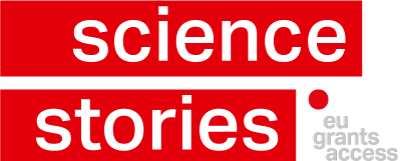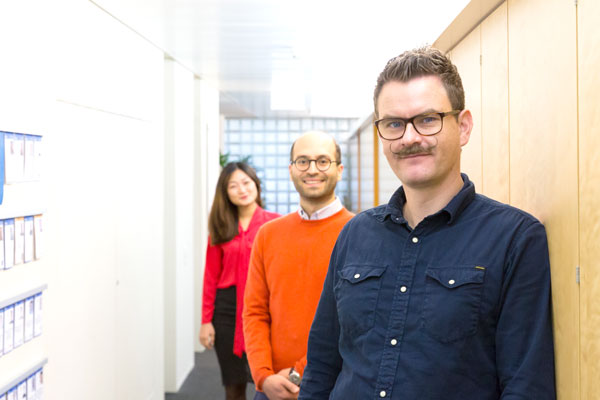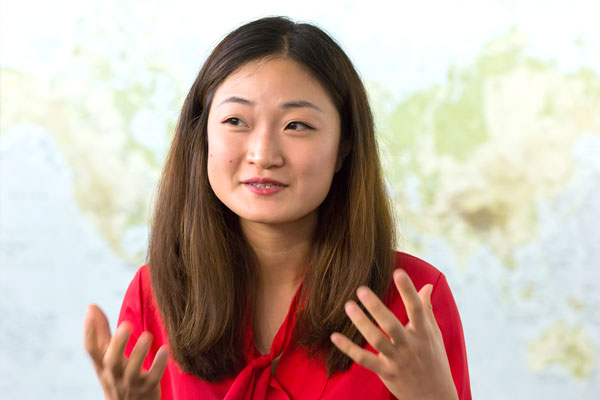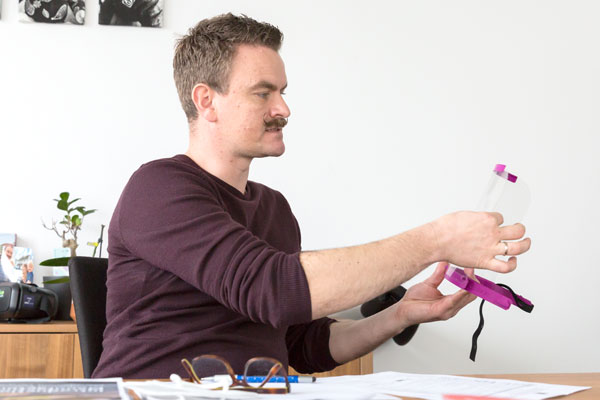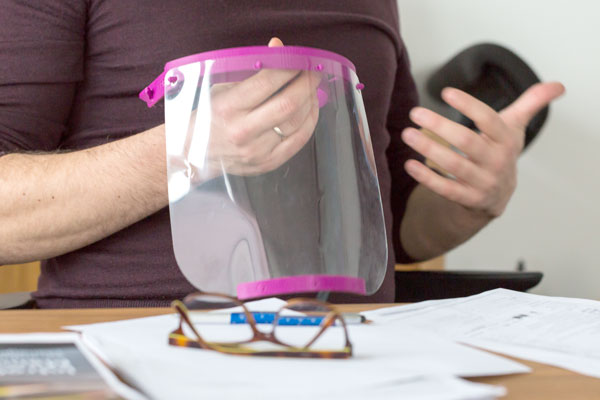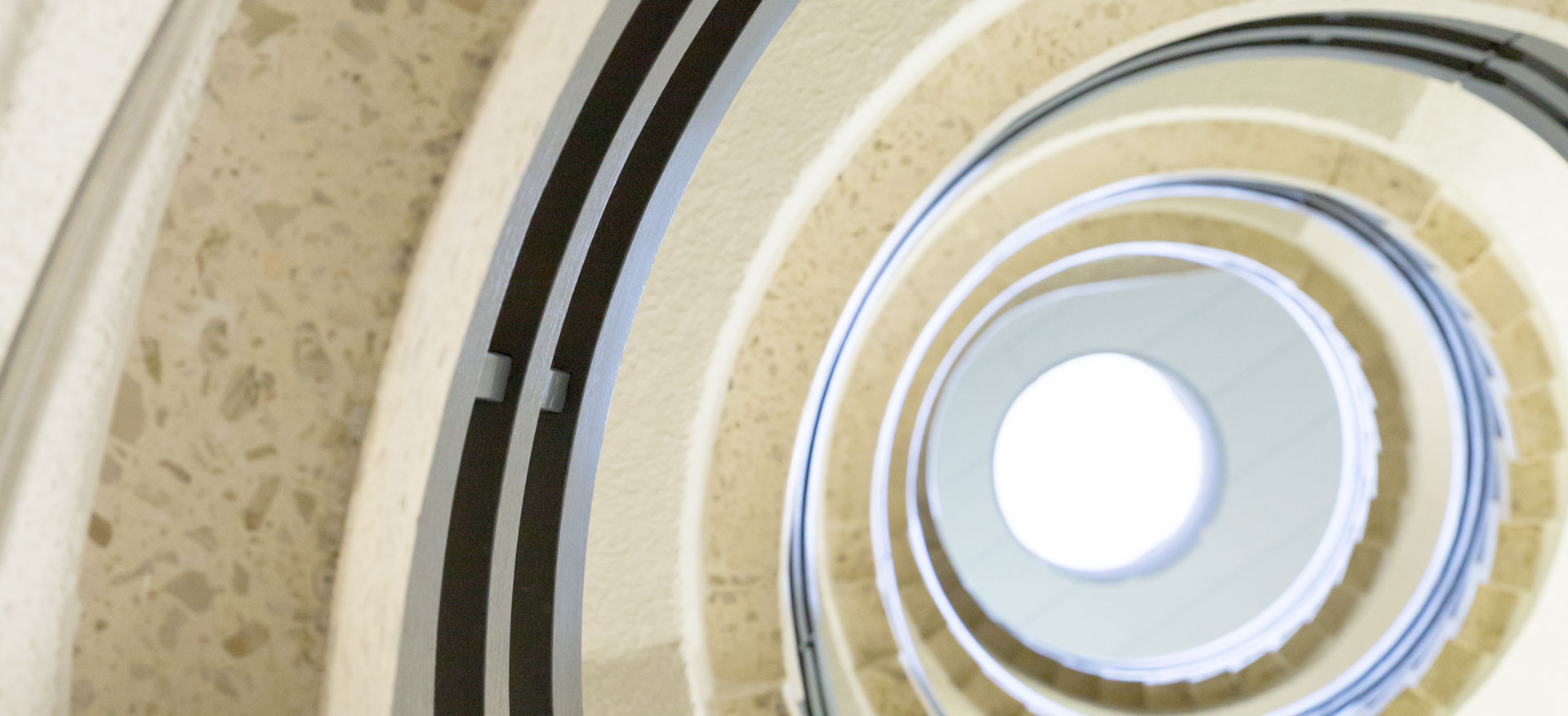
When manufacturers come to the rescue
In the first months of the Covid-19 pandemic, many companies switched part of their production to urgently needed face masks, protective shields or ventilators. In the Horizon 2020 project Eur3ka, Torbjørn Netland, Professor of Production and Operations Management at ETH Zurich, is studying what it takes to implement such repurposing quickly and efficiently: a conversation about capabilities, new value chains and philanthropy.
Torbjørn Netland, you are involved in Eur3ka, a European research project that was launched in response to the pandemic. How did this project come about?
Eur3ka is a project funded by a special call for coronavirus studies in EU’s Horizon 2020 research programme. In essence, the project aims to develop models and platform technologies that enable fast repurposing and supply of critical products for future pandemics. We are 24 partners, a mix of industrial associations, research centres and universities, small and medium-sized enterprises and global companies. In the early stage of application preparation, I was contacted by the coordinators who wanted us to be part of it.
Because of your expert knowledge about repurposing?
Perhaps. There are several background stories to it: First, let’s rewind to the discussions during the early days of the pandemic. Suddenly, all countries experienced a skyrocketing demand for many healthcare products. Surgical face masks, for example, were out of stock everywhere –and those that were ordered couldn’t be shipped due to the grounding of planes. So many companies in related businesses started to produce them to help out or to catch at a business opportunity. The scale of such manufacturing repurposing was unprecedented.
And second?
The ventilator shortage. Because Covid-19 is a respiratory disease, the need for medical ventilators surged. As for face masks, many companies wanted to manufacture ventilators – and went public with these plans. There was plenty of media coverage for firms who wanted to make them. However, making face masks and making ventilators are two very, very different undertakings. As a professor of production and operations management, I knew the world would be better served with another approach – or at least in addition to all these initiatives. So, I wrote an article about it for the World Economic Forum, «A better response for the ventilator shortage». I suggested that we should accelerate existing ventilator supply chains and use their technology instead of trying to come up with something new. This article caught quite some attention and was also read by the early Eur3ka consortium.
There were efforts within ETH Zurich as well to produce healthcare equipment.
Yes, and that’s in fact my third background story. I was personally involved in a manufacturing repurposing initiative, led by helpfulETH – a bottom-up community-led initiative by ETH students and staff. In March 2020, helpfulETH started to 3D-print face shields using the open-sourced product design by the Czech 3D printer company Prusa Research. I read about this honourable initiative in the ETH news and – again – I knew there was a more productive way to produce them.
«I suggested that we should accelerate existing ventilator supply chains and use their technology instead of trying to come up with something new. This article caught quite some attention.»
So, I joined helpfulETH and contacted Hubert Britschgi from Geberit in Jona, who jumped at the idea and committed to mass-produce head frames for face shields using their injection moulding machines. Within weeks, Geberit designed and produced more than 12,000 frames. helpfulETH also found a plastic producer for the transparent shields, SwissPrimePack. ETH Zurich’s Student Project House assembled and shipped the face shields, which we offered for free to doctors, dentists or other people who would need them. There were many challenging issues in this venture, particularly on the legal side, but we all learned a lot and we are proud of the achievements we made.
Who is coordinating Eur3ka?
It’s the Italian company Engineering Ingegneria Informatica SPA. In our team, Wan Ri Ho is our main resource in data collection – which she also uses for her doctoral project. Dr. Omid Maghazei is another resource and mentor for Wan Ri Ho in the project and I am overseeing the project and am responsible for our deliveries.
For the data collection, I saw that you interviewed 45 different companies. Was it easy to find them?
Wan Ri Ho: Some companies were hesitant. But those who were willing to talk to us really wanted to share all their experiences with us in order to help future organisations.
And they are spread all over Europe?
Netland: In our sample, yes – but of course, everywhere in the world companies tried to produce various products in high demand. Some tried to make money out of it, which is good if they really helped filling the demand. Others were more altruistic, saying, «We are doing this for a good cause», and others admitted, «This is good PR», – which must not be underestimated when reading media reports about repurposing.
Were there any surprises about the companies that were active in repurposing?
Ho: Yes, it is very interesting to see how diverse they are. Companies in widely different industries jumped into this. It shows that it is not only existing production capabilities that matter for repurposing, but also whether the company has response capabilities to quickly switch capacities to a sudden need.
Is there a company which stands out?
Netland: I think our Italian partner SEACSUB SPA could serve as a good example because they were very early, experiencing the first large Covid-19 outbreak in Europe in Northern Italy. SEACSUB produces among other things full-face snorkelling masks. They repurposed this product and the production line to produce breathing masks compatible with hospital ventilators. You may have seen photos of this product used for Covid-19 patients in intensive care units. Other companies were less successful. There has been lots of smoke and mirrors – especially from the many companies that aimed to solve the ventilator shortage. Partly because it is very difficult to build and maintain the capabilities required to repurpose manufacturing effectively and efficiently. What exactly it was that made the difference between success and failure is what we study.
You study the internal and external factors in the process of repurposing. Are the internal ones more important?
No! It is impossible to repurpose manufacturing alone, unless you are a producer of ventilators already – and even then, you depend on suppliers. What is truly unique in this process is the mutual dependence of many players and stakeholders. It is akin to «open innovation», the active use of the outside world to bring about innovations. And in the case of repurposing for pandemic response, many are involved: the government for example is very important, providing funding and incentives and building joint consortia. We also saw how open-sourced designs helped companies repurpose faster. Everything has to come together in order to create success.
«What is truly unique in this process is the mutual dependence of many players and stakeholders.»
Omid Maghazei: The more complex a product is the more collaboration is needed to ensure a successful manufacturing repurposing. This was very clear in the case of ventilators.
Netland: Yes, that’s an important point. In the production of hand sanitisers, many companies were very successful: distilleries could easily make sanitiser liquids, also breweries like BrewDog in the United Kingdom. Not many continued, because it wasn’t a viable business in the long run. But it was good for them to get the credit for it in the public eye and of course it helped out during a critical period of the pandemic. What we study is what made them able to respond quicker than others and take the opportunity.
Isn’t this something that depends very much on personal initiative?
Yes, you need people who burn for and thrive with this kind of things. But no such project can run solely on one person’s initiative.
And how important are the efforts of the community?
Ho: For the face shields for example, they were very important. To design such a product from scratch would take a lot of time. But we saw that there were many open platforms, where engineers shared their designs and challenges so that others would be able to overcome them. We also observed that people worked together remotely during the lockdown, where they assembled the shields at home. To overcome the shortages of raw materials, again, where possible, the community helped: people started calling each other and delivering products to the companies that needed them.
«When people work together to reach a higher purpose, you have much less conflict, since they really care about what they do.»
Did the role of philanthropy in such actions surprise you?
Netland: To some extent, yes. If we are talking about pure businesses spending so much time and resources on these projects. Let me put it this way: I think the share of companies that got involved in order to earn more money was much smaller than I thought would be the case originally. Many companies went into repurposing with the desire to actually help out. Like Geberit. They invested considerable time and money into creating the needed injection moulding tool and producing face shields for Switzerland.
You are now in the middle of the two-year study and have first results. What are the most interesting findings?
Ho: It was interesting to see how these large international companies were coming together. They put all their differences aside and also their hierarchies. Everybody was open to solve the problem.
What about certain organisational structures which can slow down things?
Netland: This wasn’t a serious issue as far as I am concerned.
Maghazei: It has to do with the element of trust. When these companies came together to build ventilators, they trusted the core competencies of the different players.
Netland: We call it purpose-driven organisation. When people work together to reach a higher purpose, you have much less conflict, since they really care about what they do. But these initiatives are also a bit like balloons: at some point, the project has to be economical. If it isn’t, it will deflate fast. Many companies we studied stopped their projects. Only very few came up with a new product during the pandemic that they are still manufacturing.
What are your next steps now?
Eur3ka has a very hairy goal which is challenging to achieve. The idea is to create a digital platform which enables the EU in a future crisis like a pandemic to have a faster response to meet the demand of whatever product will be needed. It can be medicine, protection equipment, hospital beds – whatever. Our input is the information on how manufacturing companies are able to repurpose faster and better – a small but important piece in this large puzzle.
We now look into the more challenging products to repurpose: the ventilators with their complex technology and supply chains and the physical health care properties involved in it. Learning from this complex product will help us give advice to companies and governments on how to repurpose better in the future.
Interview with Torbjørn Netland
Torbjørn Netland
Torbjørn Netland joined ETH Zurich in 2016 as Assistant Professor of Production and Operations Management (POM). The Chair of POM at the Department of Management, Technology, and Economics focuses on smart manufacturing, behavioural operations, global operations, and operational excellence. Netland conducts his research in close cooperation with companies. Born in Norway in 1980, he studied industrial engineering and management at the Norwegian University of Science and Technology (NTNU), Trondheim. He is a Member of the World Economic Forum's Global Future Council on Advanced Manufacturing and Value Chains and a Fellow of the European Academy of Industrial Management. Torbjørn Netland is married and father of three small children.
Horizon 2020 Project
Eur3ka: EUropean Vital Medical Supplies and Equipment Resilient and Reliable Repurposing Manufacturing as a Service Network for Fast Pandemic Reaction
- Programme: Kollaboratives Projekt (24 Partner)
- Duration: 1. December 2020 – 30. November 2022
(24 months) - Contribution for ETH Zurich: 207’500 €
